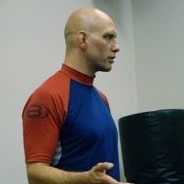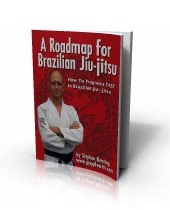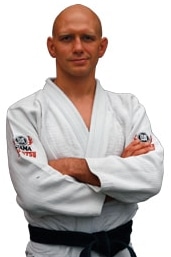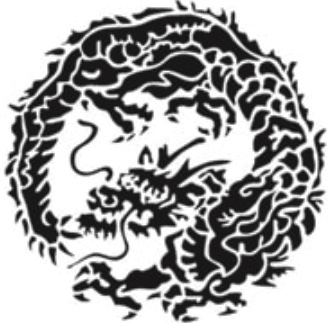
My newsletter last week about grappling with an aging body generated a fair bit of feedback. Some respondents thanked me for the article (you’re welcome). Others called me a candy-ass and that I should work harder and complain less (they were joking, I think).
A few shared their own experiences and lessons learned, and I think it worthwhile to share these insights with the Grapplearts readership. In particular I encourage ‘younger’ readers (ie under 35) to pay attention to this stuff: first of all Father Time will catch up with you too, and secondly, most of this advice will make you a better grappler regardless of how old you are.
————————————
Jimmy Thompson had this to say:
I have been training in martial arts for over 25 years. i Started Karate at the age of 6, where they put alot of stress on static stretching, and i started BJJ in 1996. I became very flexible, too flexible…I ended up having five knee surgeries before the age of 30! I currently train BJJ 4 days a week, boxing & kickboxing 3 times a week and submission grappling 2 times a week!
The reasons that i have been able to keep up this type of schedule is because i have learned a few things over the years!
1: NO SWEATING = NO STRETCHING! Stay away from static stretching before a brisk warm up. in fact, warm up harder, stretch after class. You gain more benefits from stretching when you are warm and it speeds up your recovery!
2: LISTEN TO YOUR BODY! Somedays are meant to be either days off or more of a mental work out. Don’t get caught up in being “a badass”, it’s counter productive. Alot of us used to be able to go hard all of the time, face the facts, your OLD!
3: STAY AWAY FROM STRONG NEW GUYS! Until they can control themselves, don’t try to do it for them!
4: HEAL UP FIRST! Small injuries can get to be not so “small” if you don’t take the time to let them heal! so many times I see people come back “half recovered”, back rolling hard…only to repeat the injury again and again! I have to say that this is the most important when it comes to neck and other spine injuries!
5: BE BASIC! The fundamentals that you learned in your first year, or so, are usually your best bet. Continue to increase the amount of time that you spend in each position, merely making things tight! Make it a game of inches, take it down to halves of inches, eights of inches, etc…pressure, pressure, pressure! Not, go, go, go…take away the space and you take away the speed! One thing i remember when i was about 19 years old was the amount of pressure that Rigan Machado put on me when he was in side control, i wanted to tap! He didn’t move fast or work hard, he took what i gave him, and took away all of my space with pure basics!
These are the rules that I follow & I am very rarely hurt. Well, I’m always hurt, rarely injured!
Roll safe!
Jimmy Thompson
T-Town MMA
www.ttownmma.com
————————————
Martin W. shares 6 secrets he uses to remain competitive in his fourties:
- I fight differently than I used to. New guys waste a lot of energy. I can get someone in my guard quickly and they will expend far more energy trying to pass than I will keeping them in.
- I am extremely cautious in allowing myself to get in a compromised position and having to work extra hard to get out. I will scramble hard to prevent someone from getting side control or mount. I fight really hard during the scramble, then lower my rpm’s at different points in the fight.
- I close my eyes a lot when I fight. There are many times during a 6 minute sparring session where I am extremely relaxed and keeping my eyes closed makes me very relaxed. It is something I just shut off and on. During a fast, short and tough scramble for position, I am 110% going hard with my eyes open. But when we are tied up, and we are both fighting for minute, tiny advantages my eyes are closed. I fight kind of on and off the whole time. It is also unnerving to an opponent. They don’t know if you are tired, or playing possum, or on drugs. 🙂
- My strategy is different. I have found that a lot of guys work hard to get the mount, then they don’t really know what to do once they get there. Or they can’t keep it very well, or their armbar attempts are lousy. Sometimes I won’t worry that much about an aggressive guy fight for the mount. He fights like the mount is the ultimate goal. I let him get it, then reverse him. The guy works really hard to get the mount and uses all hisenergy.
- You are right about sleep. It is crucial. I try not to overtrain. I try to train 3 times a week, jog and lift a little once or twice a week and take off once or twice a week according to how I feel.
- Stretching. I stretch every morning and every night. Many times during the day also when I am working on the computer. I find that stretching the legs and hips are the most beneficial. I am constantly working to try and do the splits, some days are really close, then other days, not so close. It’s funny, all animals naturally stretch, but a lot of people don’t. It helps circulation, flexibility, makes wrestling easier, and can really help prevent injury.
That’s it. That’s my two cents.
-Martin Walker
————————————
Eric G. talks about preventing joint problems:
I am 43 years old and have been involved in martial arts for over 21 years – the past 10 in BJJ. I have developed arthritis in my right hip due to injuries that I didn’t take care of, and until recently I sparred hard every training session (3x a week). I have lost a great deal of flexibility and comfort in my right hip, so, I am re-learning BJJ with a handicap. The hip problem not only effects my injured hip but my other hip and back. Putting my socks on in the morning is a challenge now. It’s not something I wish on anyone.
I did karate for ten years which involved a lot of leg work, so, my muscles around my hip stayed strong. My only workout for the past several years has been BJJ (and I have been stuck in desk job) and I use to think that BJJ was a great workout, but it has some problems on maintaining overall muscle development. I am learning this the hard way.
For hip therapy, I am seeing a chiropractor once a week for PT and a doctor every three weeks for Prolotherapy. As result of the therapy, I have come to realize that I have allowed some muscles to atrophy to the point that the joints have become loose which in turn allowed the hip joint injury which lead to the arthritic problems.
Some things I would recommend to all martial art practitioners, of any age, to ward off joint problems are:
- Warm up and stretch lightly before each practice or exercise session.
- Do some kind of strength training that keeps all the muscles strongalong with your training.
- Do a complete and thorough stretch immediately following practice or exercise.
- Don’t overtrain.
- If it hurts, don’t work it out and seek the advice of a trainedhealth professional.
To the young guys, I say injuries are cumulative, so, don’t let being young lull you into thinking you won’t have problems later if you injure something now. The neglect you show today will haunt you tomorrow.
Eric G.
more advice for older grapplers on this site


